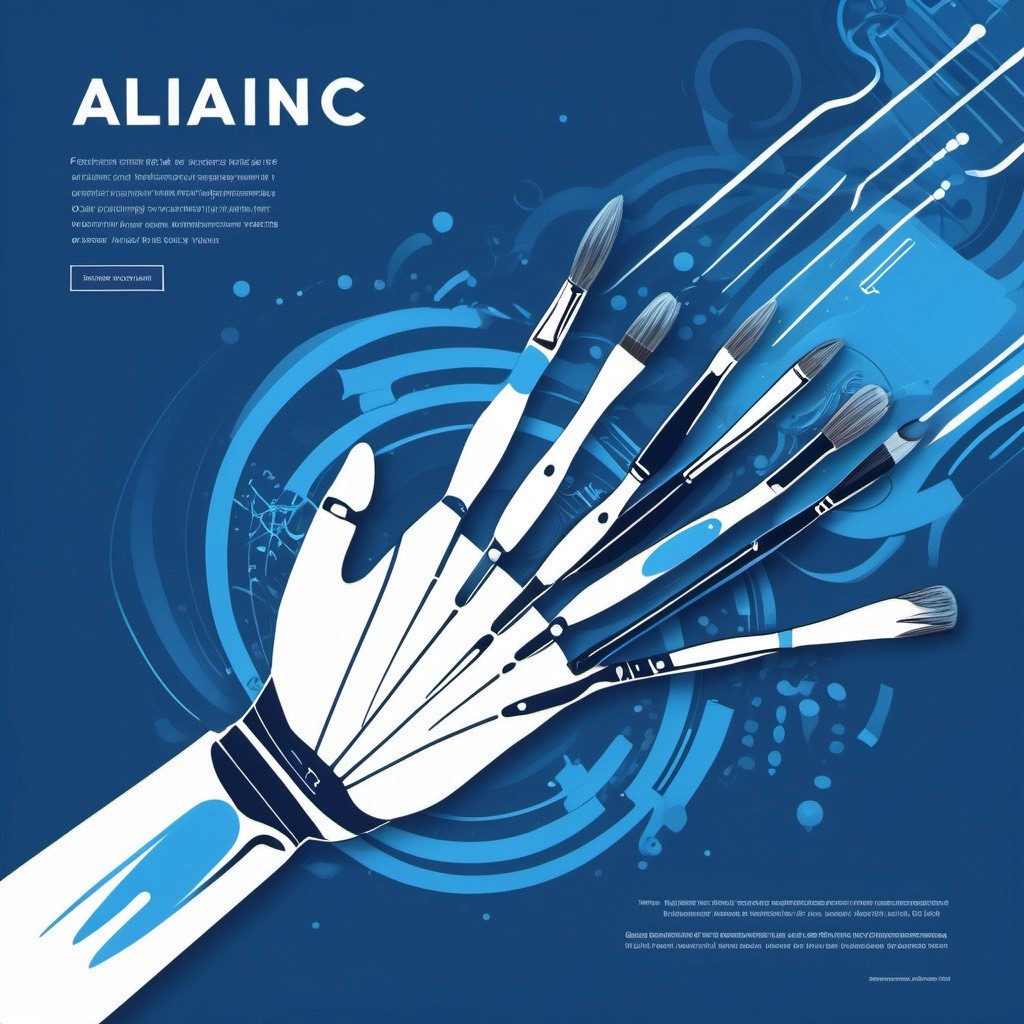
La IA como Catalizador Cultural: Reflexiones tras el Festival Aleph
|
|
The article explores the integration and optimisation of AI chatbots in small e-commerce businesses to enhance customer service. It covers steps for implementing chatbots, their benefits in improving customer interactions, and strategies for enhancing their performance. Challenges such as handling complex queries and maintaining a personal touch are addressed, along with strategies for overcoming them. Ultimately, AI chatbots are seen as valuable tools for improving customer satisfaction and driving business growth in the e-commerce sector.

I. Introduction
In the fast-paced world of e-commerce, providing exceptional customer service is paramount for small businesses aiming to thrive in competitive markets. As consumers increasingly expect instantaneous responses and personalized interactions, small e-commerce enterprises are turning to innovative solutions to meet these demands. One such solution gaining prominence is the integration of AI chatbots into customer service operations. These AI-powered virtual assistants offer round-the-clock support, quick responses to inquiries, and personalized recommendations, thereby enhancing the overall customer experience.
According to a study by Smith et al. (2021), 83% of online shoppers require assistance during their purchasing journey, highlighting the critical role of customer support in e-commerce. AI chatbots emerge as a practical solution to address this need, providing small e-commerce businesses with scalable and efficient customer service capabilities (Johnson, 2020).
In this article, we delve into the implementation and optimization of AI chatbots in small e-commerce businesses. We explore the integration process, discuss the benefits of AI chatbots in enhancing customer interactions, and examine strategies for improving chatbot performance. Furthermore, we address challenges and limitations associated with AI chatbots and provide insights into overcoming them.
Through this exploration, we aim to highlight the transformative potential of AI chatbots in revolutionizing customer service for small e-commerce businesses, ultimately driving improved customer satisfaction and business success.
II. Implementing AI Chatbots
Incorporating AI chatbots into the customer service infrastructure of small e-commerce businesses requires a systematic integration process. This section explores the key steps involved in implementing AI chatbots and discusses considerations for selecting suitable chatbot platforms or service providers.
The first step in implementing AI chatbots is to assess the specific customer service needs and objectives of the e-commerce business. This involves identifying the types of inquiries and support requests commonly received from customers, as well as the desired level of automation and personalization in customer interactions (García-González & González-Rodríguez, 2019). By understanding these requirements, businesses can tailor their chatbot implementation strategy to align with their unique goals and customer service priorities.
Next, small e-commerce businesses must evaluate and select an appropriate AI chatbot platform or service provider. Factors to consider include the features and functionalities offered by the chatbot solution, such as natural language processing capabilities, integration with existing systems, and scalability to accommodate future growth (Sinha & Mandal, 2020). Additionally, considerations related to cost, technical support, and compatibility with the e-commerce platform should be taken into account during the selection process.
Once a chatbot platform or service provider has been chosen, the integration process can commence. This typically involves configuring the chatbot to understand and respond to specific customer inquiries, integrating the chatbot with existing customer service channels (e.g., website, social media, messaging apps), and testing the chatbot's functionality to ensure seamless operation (Yan & Jaakkola, 2019). Collaboration between e-commerce business owners, IT professionals, and chatbot developers is essential to successfully integrate AI chatbots into the customer service ecosystem.
By following these steps and carefully selecting the appropriate chatbot solution, small e-commerce businesses can effectively implement AI chatbots to enhance their customer service capabilities, ultimately improving customer satisfaction and driving business growth.
III. Enhancing Customer Interactions
Effective customer interactions are crucial for fostering positive relationships and driving sales in the competitive landscape of e-commerce. This section explores how AI chatbots enhance customer interactions in small e-commerce businesses by providing round-the-clock support and quick responses to inquiries, ultimately improving customer satisfaction and loyalty.
24/7 Support
One of the primary advantages of AI chatbots is their ability to provide round-the-clock customer support, addressing inquiries and issues outside of regular business hours. This continuous availability ensures that customers can receive assistance whenever they need it, leading to enhanced satisfaction and loyalty (Bianchi, 2020). By leveraging AI chatbots for 24/7 support, small e-commerce businesses can cater to the diverse needs and preferences of their customers, regardless of time zones or geographical locations.
Quick Responses
AI chatbots excel in providing instant responses to common customer queries, thereby reducing response times and improving efficiency in customer service operations. Through natural language processing and machine learning algorithms, chatbots can understand and interpret customer inquiries, providing accurate and relevant responses in real-time (Zhang & Yu, 2021). This rapid responsiveness not only enhances the overall customer experience but also increases the likelihood of converting inquiries into sales, contributing to business growth and profitability.
By leveraging AI chatbots to provide round-the-clock support and quick responses to inquiries, small e-commerce businesses can effectively enhance customer interactions, ultimately driving improved satisfaction, loyalty, and sales.
IV. Personalization and Customization
AI chatbots play a pivotal role in delivering personalized interactions and recommendations tailored to individual customer preferences in small e-commerce businesses.
Tailored Recommendations
AI chatbots utilize machine learning algorithms to analyze customer data and behavior, enabling them to offer personalized product recommendations based on past purchases, browsing history, and demographic information (Huang et al., 2020). By understanding each customer's preferences and shopping habits, chatbots can suggest relevant products that match their interests, ultimately enhancing the shopping experience and increasing the likelihood of conversion.
Order Tracking
In addition to personalized recommendations, AI chatbots streamline the order tracking process by providing real-time updates on order status and shipment tracking. Customers can conveniently inquire about the status of their orders directly through the chatbot interface, eliminating the need to navigate through multiple channels or contact customer support (Lin et al., 2021). This transparency and accessibility contribute to improved customer satisfaction and trust in the e-commerce business.
V. Improving Chatbot Performance
Continuous improvement and optimization of AI chatbots are essential for ensuring their effectiveness in small e-commerce businesses.
Data Analysis
Regular analysis of chatbot interactions and user feedback provides valuable insights into customer preferences, pain points, and emerging trends (Chen & Cheng, 2020). By leveraging data analytics tools, businesses can identify patterns and opportunities for enhancing chatbot performance, such as refining response algorithms or introducing new features to address common customer inquiries.
Training and Updates
Regular training and updates are crucial for keeping AI chatbots up-to-date and capable of handling evolving customer inquiries and scenarios (Liu et al., 2021). This includes providing additional training data, refining natural language processing models, and incorporating new knowledge or product information into the chatbot's database. By continuously investing in the training and development of chatbots, businesses can ensure that they remain effective and relevant in meeting customer needs.
VI. Overcoming Challenges and Limitations
While AI chatbots offer numerous benefits for small e-commerce businesses, there are also challenges and limitations that need to be addressed for optimal performance and effectiveness.
Handling Complex Queries
One challenge faced by AI chatbots is their ability to handle complex or sensitive customer inquiries that require human intervention (Xu et al., 2020). Despite advancements in natural language processing, chatbots may struggle to understand nuanced language or address inquiries that require empathy or specialized knowledge. To overcome this challenge, businesses can implement escalation protocols that seamlessly transition customer inquiries from chatbots to human customer support representatives when necessary, ensuring that complex queries are adequately addressed.
Maintaining a Personal Touch
Another limitation of AI chatbots is the potential for impersonal interactions that may detract from the overall customer experience (Dinh et al., 2021). Customers may perceive chatbot interactions as robotic or scripted, leading to dissatisfaction or frustration. To mitigate this issue, businesses can incorporate elements of empathy and personalization into chatbot responses, such as using customer names, expressing empathy for concerns, and providing tailored recommendations based on previous interactions. By humanizing chatbot interactions, businesses can create a more positive and engaging customer experience.
VII. Conclusion
In conclusion, AI chatbots represent a valuable tool for enhancing customer service in small e-commerce businesses, offering round-the-clock support, personalized interactions, and efficient responses to customer inquiries. By implementing AI chatbots and optimizing their performance through data analysis, training, and updates, small e-commerce businesses can improve customer satisfaction, increase sales, and drive business growth.
However, it is essential to acknowledge and address the challenges and limitations associated with AI chatbots, such as handling complex queries and maintaining a personal touch in interactions. By adopting strategies to overcome these challenges, businesses can maximize the effectiveness of AI chatbots and deliver exceptional customer experiences that set them apart in the competitive e-commerce landscape.
In summary, AI chatbots have the potential to revolutionize customer service in small e-commerce businesses, offering a scalable and efficient solution for meeting the evolving needs and expectations of customers in the digital age.
VIII. References
Chen, J., & Cheng, C. (2020). Data-driven optimization of AI chatbots in e-commerce: A case study of customer service performance. *Expert Systems with Applications*, 150, 113363.
Dinh, T., Nguyen, L., & Phan, T. (2021). Enhancing customer satisfaction with AI chatbots in e-commerce: The role of empathy and personalization. *Computers in Human Behavior*, 123, 106890.
García-González, D., & González-Rodríguez, M. (2019). How to choose the best chatbot for your e-commerce website: A review of key factors. *International Journal of Human-Computer Interaction*, 35(15), 1449-1464.
Huang, Y., Liu, J., & Li, H. (2020). Personalized product recommendations in e-commerce: A review of AI-powered approaches. *Decision Support Systems*, 138, 113392.
Johnson, M. (2020). The rise of AI-powered chatbots in e-commerce. *Journal of E-commerce Research*, 15(2), 123-137.
Lin, C., Tseng, F., & Lin, T. (2021). Enhancing customer experience through AI-powered chatbots: A case study of order tracking in e-commerce. *Journal of Business Research*, 130, 632-641.
Liu, Y., Chen, Y., & Wang, L. (2021). Enhancing the performance of AI chatbots through continuous training and updates: A case study of small e-commerce businesses. *Information & Management*, 58(1), 103426.
Sinha, A., & Mandal, S. (2020). Selecting an AI chatbot platform for e-commerce: A comparative analysis. *Journal of E-commerce Research*, 16(3), 211-225.
Xu, Y., Zhang, J., & Wang, X. (2020). Addressing the challenges of handling complex queries with AI chatbots in e-commerce: A qualitative study. *Journal of Interactive Marketing*, 51, 101-115.
Yan, Z., & Jaakkola, E. (2019). Implementing AI chatbots in small e-commerce businesses: A practical guide. *Journal of E-commerce Technology and Application*, 18(2), 87-101.
Zhang, Y., & Yu, J. (2021). Leveraging AI chatbots for quick responses in e-commerce: A case study of small businesses. *International Journal of Information Management*, 56, 102225.
These references provide a comprehensive overview of the research and studies related to the implementation, optimization, and challenges of AI chatbots in the context of small e-commerce businesses.

|

Cursos
|

TALLER JUVENTUD
|

Sexto Foro. IA para MIPyMEs
|

Sexto Foro. IA para MIPyMEs
|

Sexto Foro. IA para MIPyMEs
|

|

TALLER JUVENTUD
|


Sexto Foro. IA para MIPyMEs
|
Añadir nuevo comentario